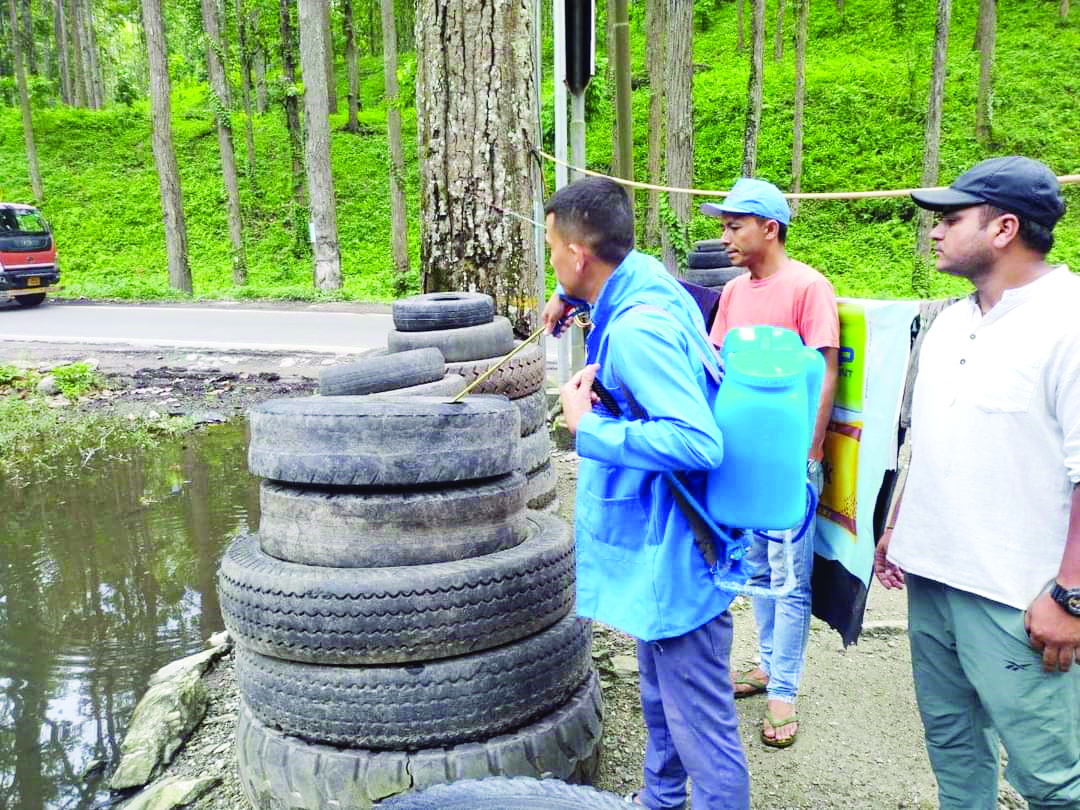
‘Changing weather could be aiding mosquitoes to breed in the Hills’
Don't Miss
Amitava Banerjee | MP | 3 Aug | Darjeeling: Climate change, erratic rainfall coupled with rise in temperatures along with open drains could well be the perfect mix for the advent of the dreaded disease dengue to the Darjeeling Hills.
This year, the number of cases has shot up in the Hills. Though there is no reason to panic, experts have advised to exercise caution as the aedes aegypti mosquitoes, the vector for dengue, are highly adaptable and resilient. Till July 31, there were a total of 53 dengue positive cases in the entire Darjeeling district. Of this, 19 cases have been registered from the Darjeeling hills.
Out of 19, 8 cases are from Darjeeling Municipality area. Kalimpong district has registered 4 cases, all in the Gorubathan area. “There is a rise in the number of cases in the Hills this time. However the situation is under control,” remarked Tulsi Pramanik, chief medical officer of health, Darjeeling.
Many patients visiting the Hill hospitals are from rural areas near the plains (in the foothills) where there is a problem of mosquitoes.
“Many have travel history to the plains so could have been infected there. However, there are a few cases without travel history and also not from the areas infested by mosquitoes. Now the question arises whether mosquitoes are changing habitat and adapting to the Hills” stated Subasish Chanda, superintendent, Darjeeling Sadar Hospital.
“This year could be a stray case but one should exercise caution. Aedes aegypti mosquitoes are highly adaptable and resilient, including their eggs and larvae. They can adapt in any environment. With erratic rainfall and rise in temperature in the Hills, the climate could be convenient for the mosquitoes. Heavy rains wash away the larvae. Strong sunshine dry away the puddles and stagnant water where these mosquitoes breed. However, hot and humid climate is favourable along with open drains where they can breed,” stated Dhriti Banerjee, Director, Zoological Survey of India, while talking to Millennium Post.
20-25 degrees Celsius is the ideal temperature. Incidentally Darjeeling has witnessed a considerable rise in temperature this year with erratic rainfall patterns. She also added that it is the right time to contain the situation and prevent it from escalating. “Spreading awareness is the main step.
Do not allow stagnant water as these mosquitoes can breed in any type of water, whether clean or dirty. Drains need to be covered. Garbage needs to be cleared. Mosquito repellents have to be used.
Areas should be kept clean,” added the director. The health department of the Gorkhaland territorial administration claimed that they are doing the needful. “We are spreading awareness.
Mosquito nets are being distributed and repellents are being sprayed. We have put Self Help Groups and ASHA workers to the job,” stated Arun Sigchi, GTA Sabhasad in-charge of health. He stated that a plasma separation machine has been installed at the blood bank in Darjeeling and a 10-bedded primary health centre has been opened at Soureni, in Mirik.
Courtesy & source: Millennium Post
https://www.millenniumpost.in/bengal/changing-weather-could-be-aiding-mosquitoes-to-breed-in-the-hills-528038


0 Response to "‘Changing weather could be aiding mosquitoes to breed in the Hills’ "
Post a Comment
Disclaimer Note:
The views expressed in the articles published here are solely those of the author and do not necessarily reflect the official policy, position, or perspective of Kalimpong News or KalimNews. Kalimpong News and KalimNews disclaim all liability for the published or posted articles, news, and information and assume no responsibility for the accuracy or validity of the content.
Kalimpong News is a non-profit online news platform managed by KalimNews and operated under the Kalimpong Press Club.
Comment Policy:
We encourage respectful and constructive discussions. Please ensure decency while commenting and register with your email ID to participate.
Note: only a member of this blog may post a comment.